Great Choice: the Mosel Valley
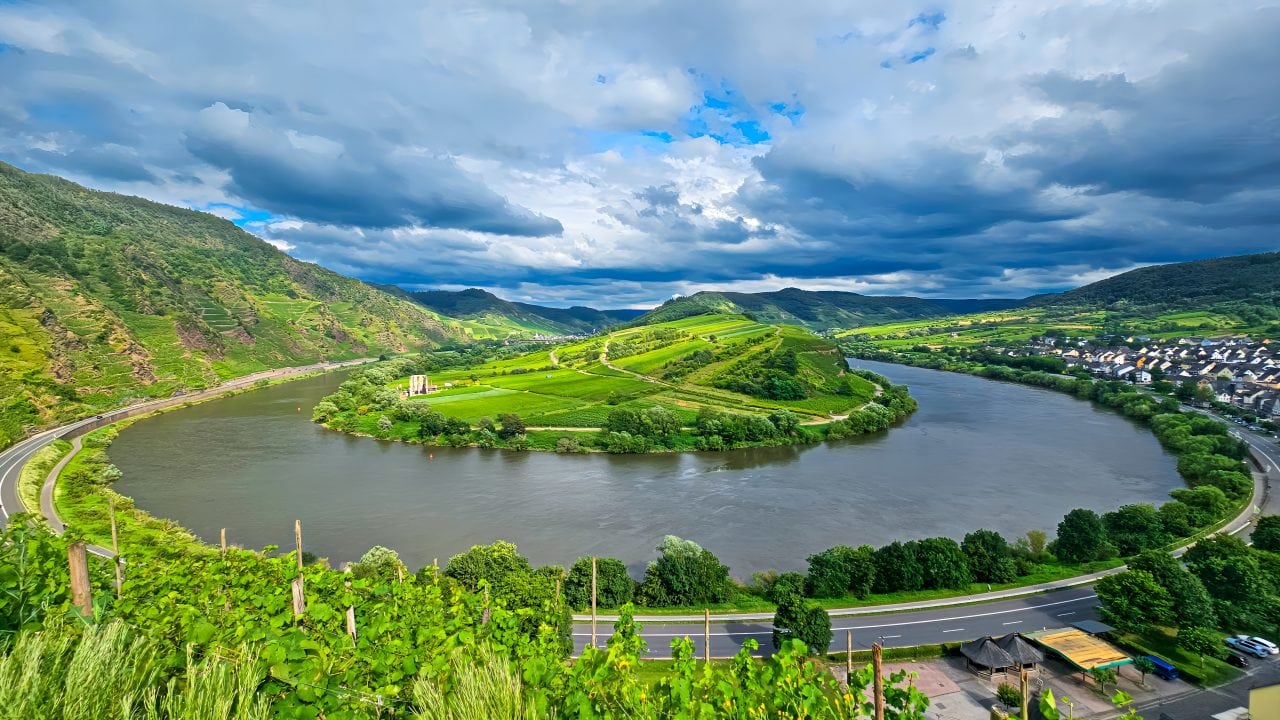
If you’re looking for a recommendation for camping or cycling in Europe, Mike and I wholeheartedly suggest the Mosel River. Originally, we planned a brief detour from our Rhine cycling tour, but we are loving the Mosel! What was supposed to be a week or two looks like it is turning into a month-long diversion.
In Germany, it’s the Mosel, in France, the Moselle—either name works in English. From a cyclist’s perspective, Germany’s section wins hands down with its developed paths. Most folks talking about cycling the Mosel mean the route between Koblenz and Trier. France is planning on catching up, though, which would be great.
I saw a very similar view to this picture, in a tourist office. I really liked it. Mike and I then rode up and around the vineyards to see if we could get a similar shot. That is not an island that you are looking at. It is one of the many tight S-bends the Mosel River makes. Mike and I could shorten our ride considerably if we didn’t insist on following all the curves of the river. A straight line from Koblenz (at the Rhine) to Schweich (our furthest south so far) is 82 km. It has taken us almost 300 km to follow the river here on our bikes.
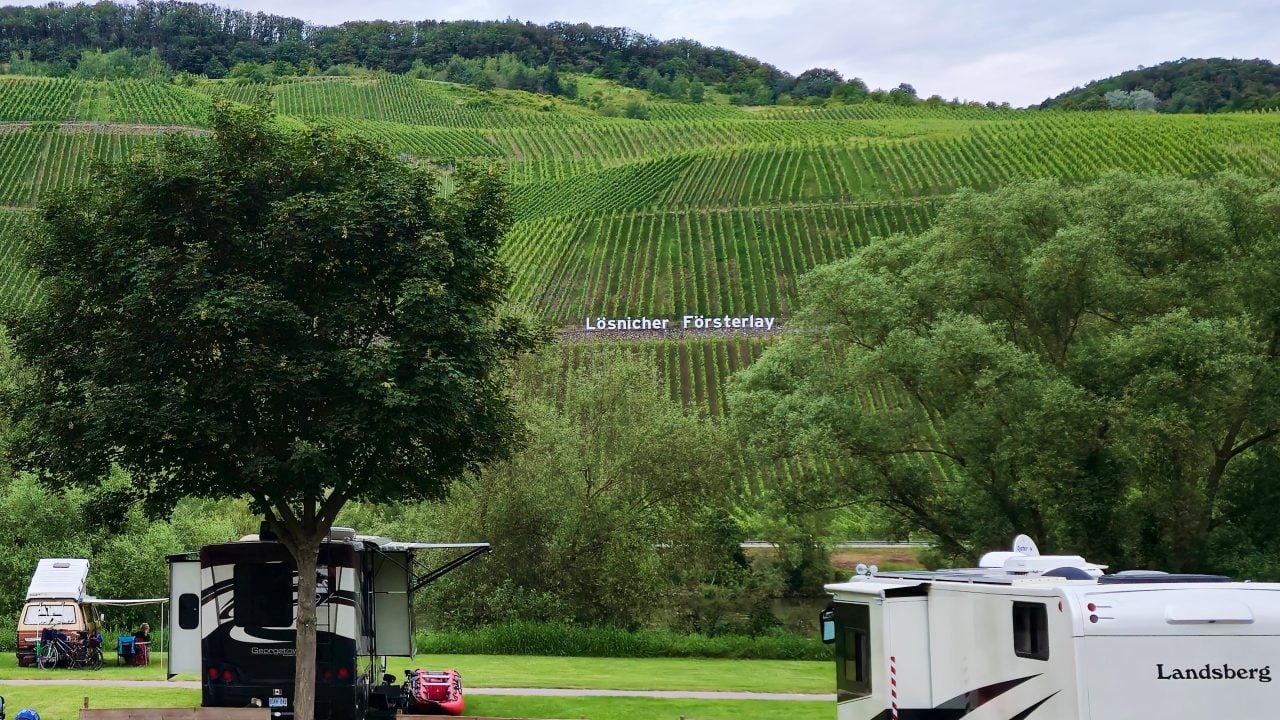
We’re staying at a simple municipal stellplatz (a step down from a campground). No washrooms or staff, but there’s water, electricity, a dump station, and even internet! It’s in a small village, right on our Mosel Cycle Path. Typically, German campgrounds meter electricity, costing us an extra 12€/$18 Cdn a day. I have no idea what that would cost when you add in our air conditioners running all night long! Our last three stellplätze (on the Rhine and Mosel) have cost 14€/$21 CAD all-inclusive. Right now we are sitting by the river watching boats go by, feeling spoiled. We are really going to get sticker shock in North America. (Side note: the camper next to us has a small slide-out. We’ve seen maybe three campers with slide-outs in eight years in Europe!)
One surprise this year is the lack of international travelers. There have been literally no French or British in Germany at all. Even the Dutch, who travel everywhere, are only here in small numbers. We did see a few from Belgium in this campground. It seems like everyone’s staying closer to home. In the past, Mike and I got a big kick wandering around our camping areas every evening checking out the license plates from the various countries. Did COVID change travel habits, or do Western Europeans just vacation more in Central/Eastern Europe than with their neighbors?
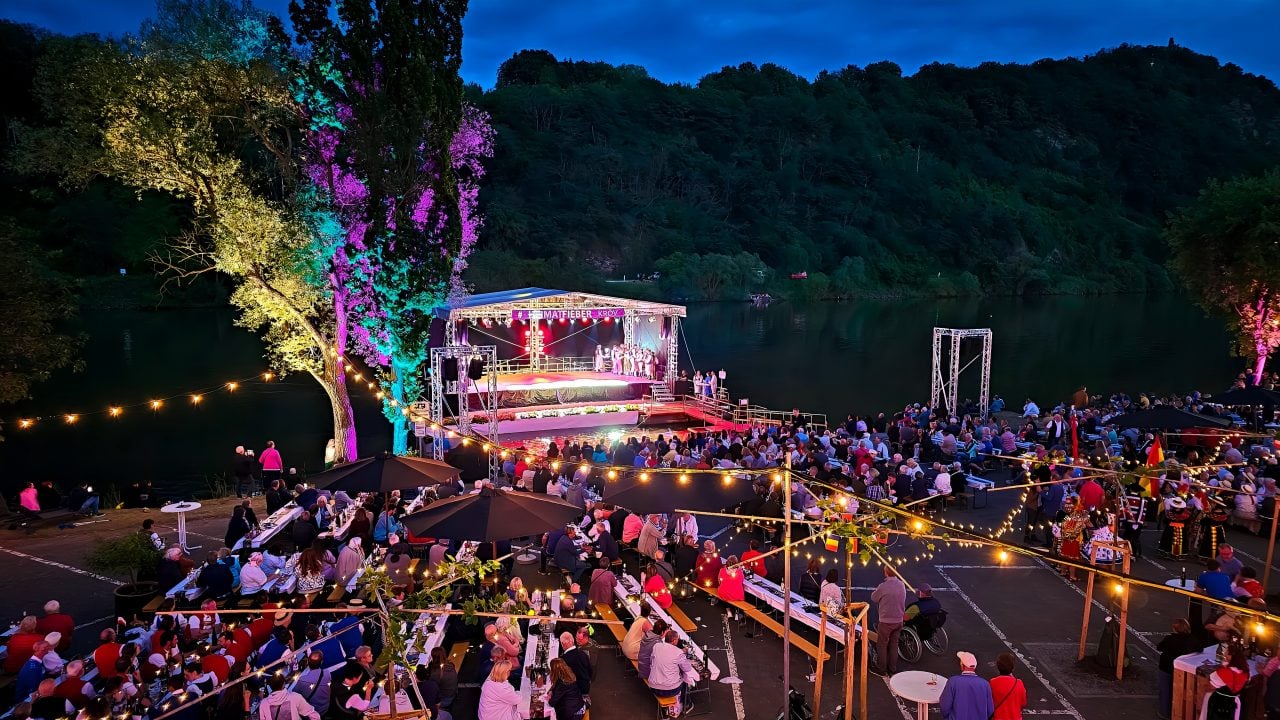
The Sunday we arrived, a Dutch couple told us about an outdoor International Folk Festival in Kröv, ending with the crowning of the Wine Queen. It was only 6km away, so we decided to attend, at least for a while, and cycled there. We took paths through the vineyards across from our stellplatz to the festival, but, since the wine queen didn’t get crowned until midnight we opted for small roads on the way back. It was our first night ride in years. No way was I doing that on a gravel path with a steep drop-off.
The festival had dancers from all over, including South America. The local costumes were amazing. We listened to a German speech, understanding only words like “internet,” “Instagram,” and “Facebook.” This festival has been running since 1954! The wine queen arrived by boat well after dark. The stage backed onto the river, and during the ceremony, thousands of candles in jars were floated down the Mosel. It was magical, making the stage look like it was floating.
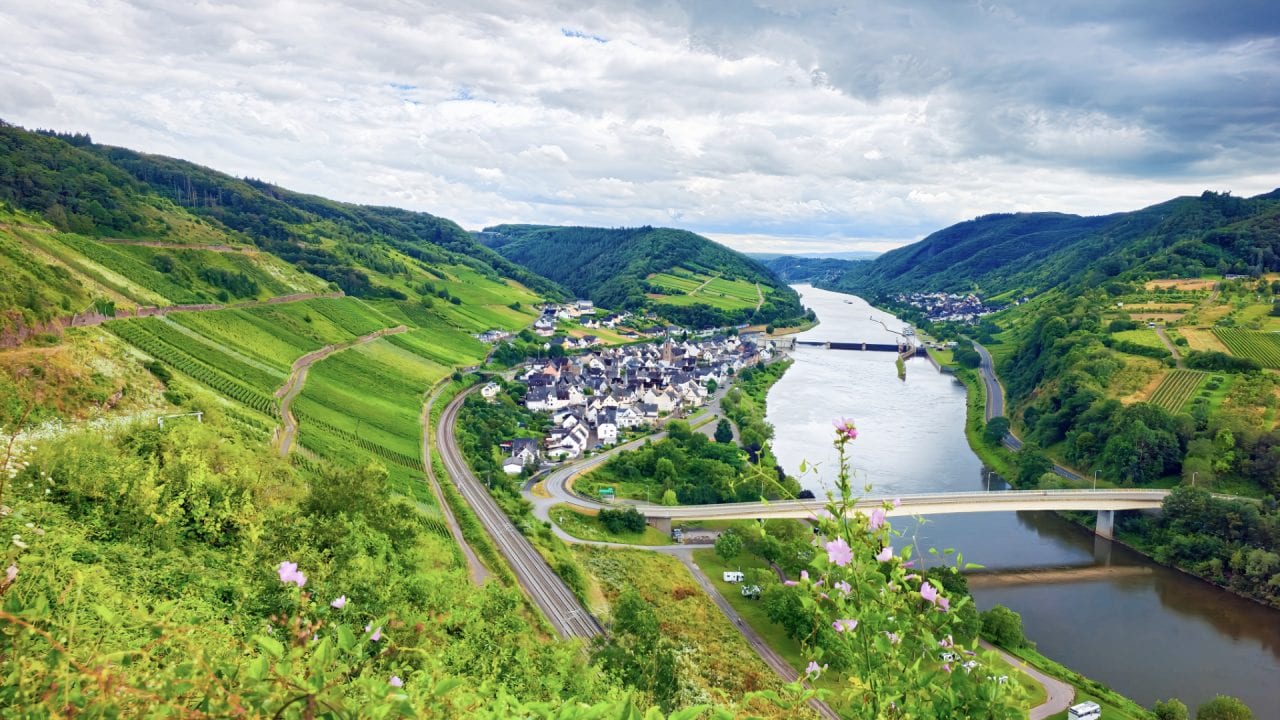
We found an app called Lauschtour with self-guided audio tours for Mosel towns AND 240 km of the cycle path itself. It automatically plays at 40 spots on the cycle path, giving info on what you’re seeing. There are multiple extremely large sundials in various vineyards. At one stop near Wehlen, we were told to look at the sundial across the river. To read the time, the audio-guide said to look at the numbers and add ½ hour in winter, 1 ½ hours in summer. Sundials predate time zones and assume that it is noon when the sun is at its peak. The tour sometimes suggests short detours off the path to see something interesting that we otherwise might miss. These audio tours are great.
The Mosel cycling infrastructure is fantastic. There are well-marked paved paths, nearly always separate from cars, on both sides of the river. Villages dot both sides, and if you stick to the river’s edge, there are no major climbs or descents. The river is narrow enough to enjoy both sides, and there are ALWAYS vineyards on the slopes. Germans are super proud of their wine here. Along with the climate, I think the slate in the soil is supposed to enhance the taste. This area is known for some of Germany’s finest wines.
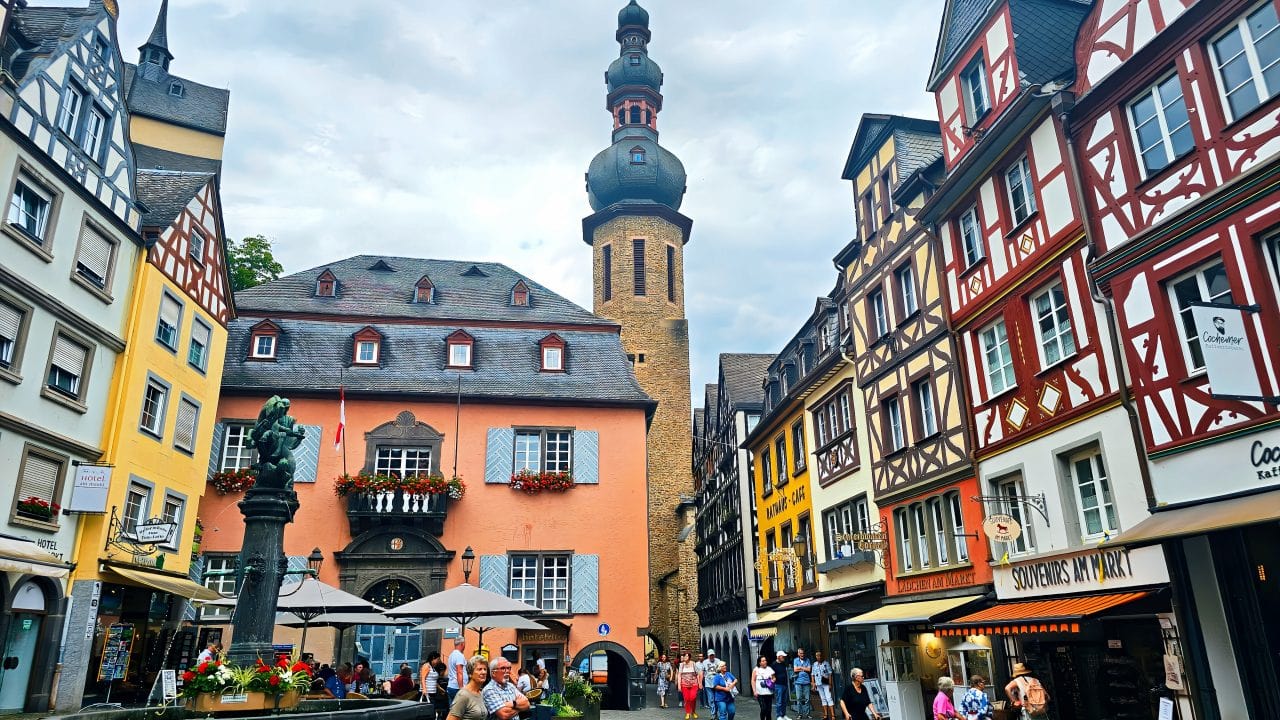
I love cycling here partly because there are so many places along the route for meals, or just drinks and ice cream. Unlike France, we’re not restricted to specific hours.
The larger picture is the market square in Cochem. The Bridge Gate is from the town of Traben-Trarbach. It was built in 1899. During WWII the bridge was completely destroyed and yet this Bridge Gate remained standing.
Some roads here are very narrow. I guess you could say that about all of Europe! One road we took the car up had a sign showing that it was only 2m (6+ feet) wide. I was concerned because, if you count the mirrors on our Lincoln, I am pretty sure that we are more than 2m wide. We might be more than that without the mirrors. Luckily Mike is an excellent driver. As he was making his way through the village along this road we got a big shock when we met an oncoming car. At 2m wide we did assume that it would be a one-way road. We were wrong.
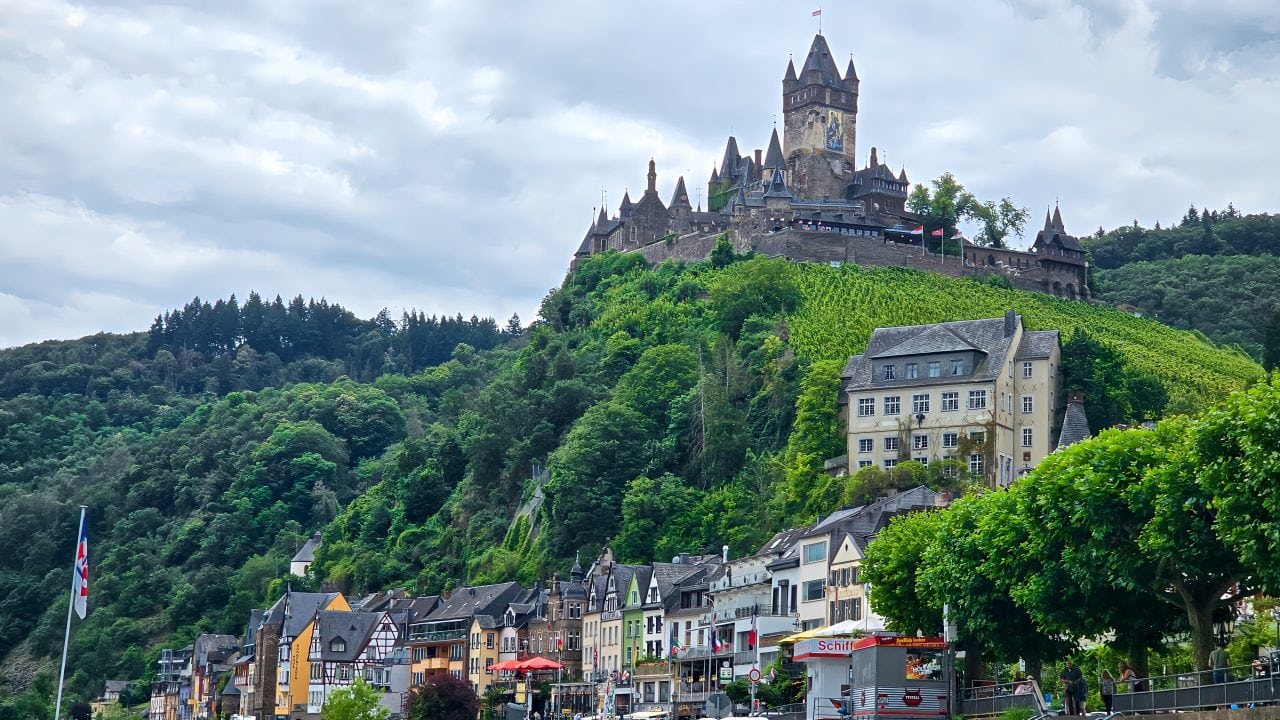
The Rhine isn’t the only river with castles! Here is Cochem Castle towering above the town. And there are still churches everywhere, like Felsenkirche chapel built right into the rock. We tried to visit the chapel but found out that we had to climb the last part. In almost 40°C heat and cycling 40 km, no thanks! We had a nice break in a café and looked up at the chapel from there.
The valley likely has its own microclimate. Extreme heat warnings were posted online for the river area. These warnings only applied at very low altitudes. You can guess how much I love seeing extreme heat warnings. I HATE the heat.
In the photo gallery I have a picture of a helicopter spraying the vineyards. Mosquitos were really bad on the Rhine but they have not been a problem in this area. We wonder if the helicopters spraying all the vineyards are also keeping down the mosquito population. Whatever the reason, it makes me quite happy.
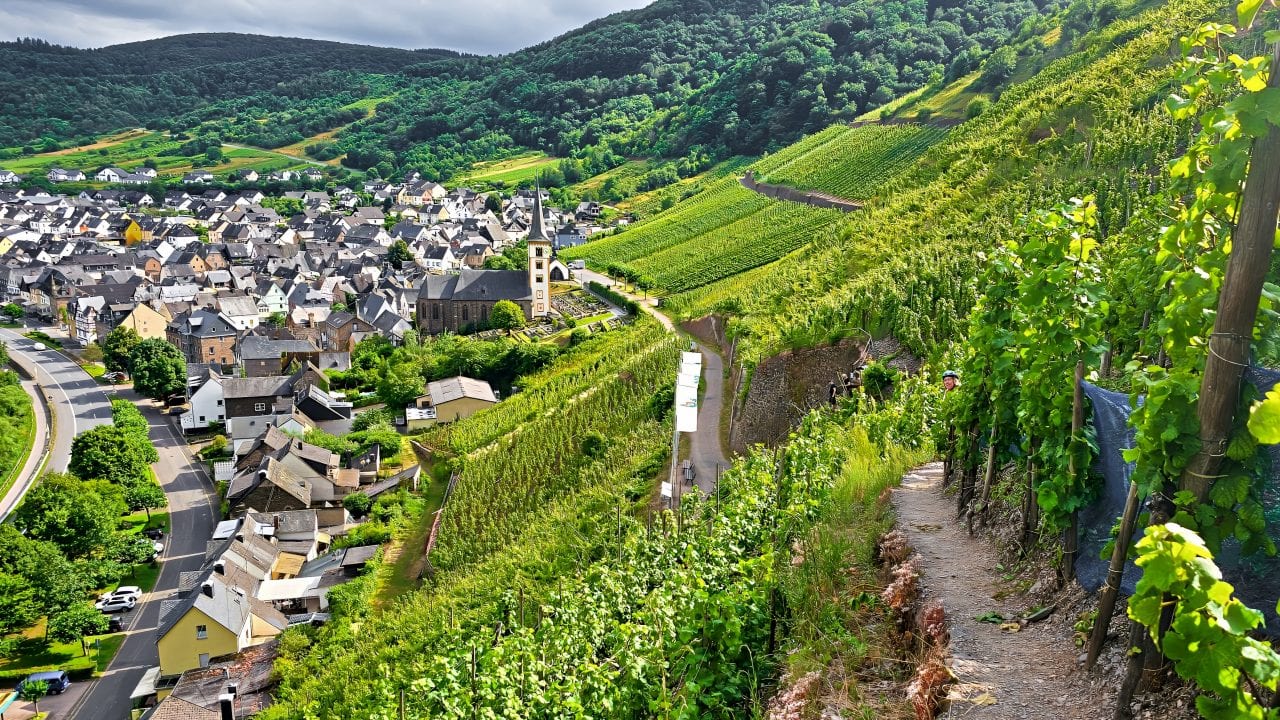
Mike, the ex-farmer, is amazed by the steepness of all the vineyard’s. He keeps thinking about the effort of walking up and down those hills. Many vineyards are on 45° slopes, one was even 70°! Mike wanted a photo to show the steepness, so we rode up into the vineyards above Bremm. We were hoping the track was bike-friendly and not just for hikers. We rode the gravel path until it ended at steps carved into the rock. Bikes abandoned, we continued on foot. If you look really closely at this picture you can see my head, with my bicycle helmet on, peeking out from behind the vines as Mike took various pictures.
When you travel away from the river you are in a very different area. It looks exactly like you would imagine rural Germany. The other day we were driving up a very long hill. Mike pointed out the speed limit sign of 100km/hour. What we found quite interesting were the signs on the opposite side of the road, i.e. going downhill, marked for 70km/hour. We had never seen a road with different speed limits depending which direction you were traveling.
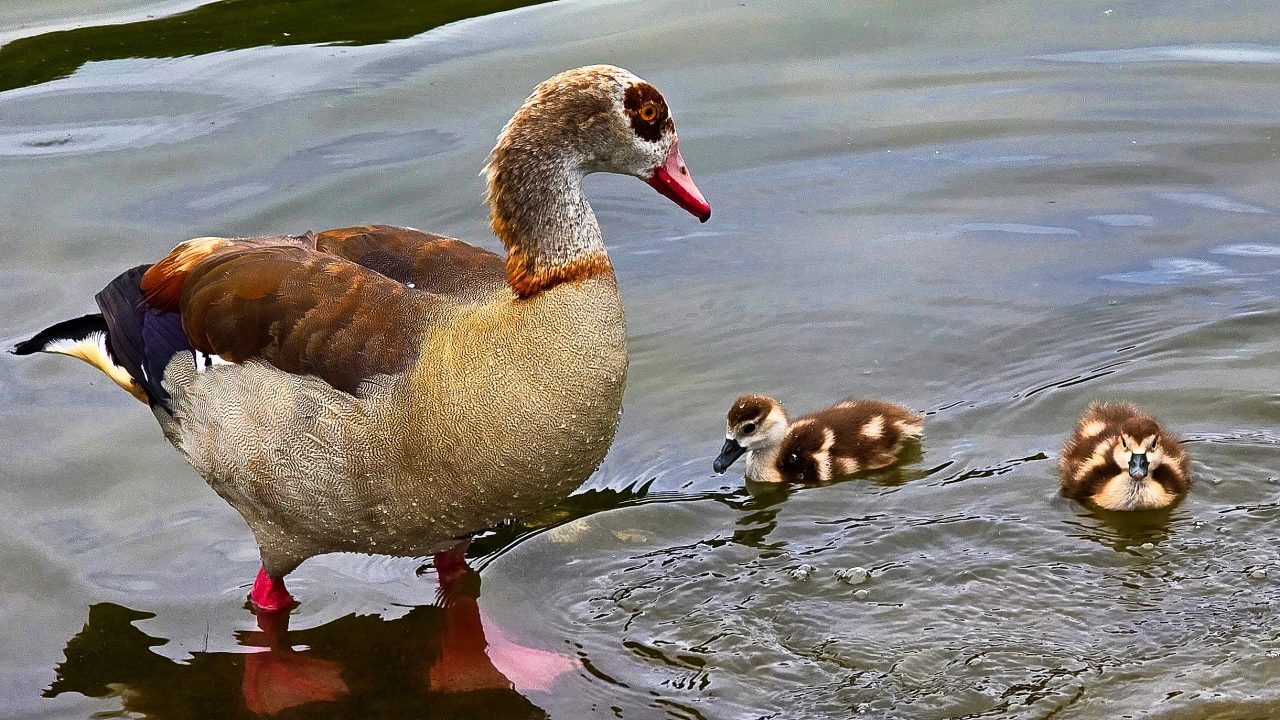
Just to prove we don’t only focus on history and architecture and cycle paths, here are some Egyptian Geese I photographed. At this stage in my life, I just realized I don’t actually know the difference between geese and ducks! I thought I did. I would have believed Google if it had told me these were Egyptian Ducks. These geese are more colorful in real life. They were introduced to Germany in 1980.
On another note, retail staff across Europe have been far more helpful than in Canada. They’ll always stop what they’re doing to help you find something in the store. Since we’re always in new places, this is very helpful.
I couldn’t resist adding one more picture. We cycled past this beautiful building, Schloss Lieser, which is now a hotel. I had to take a photo.
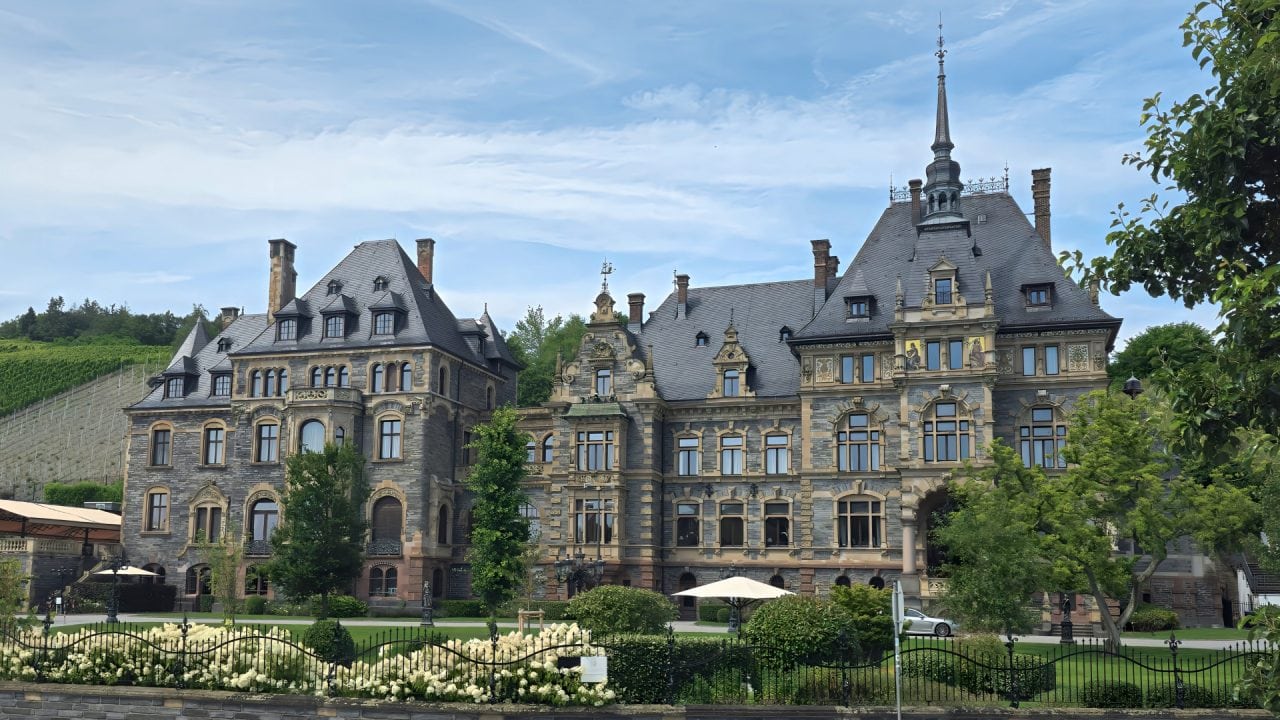

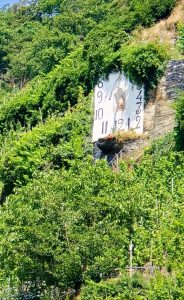
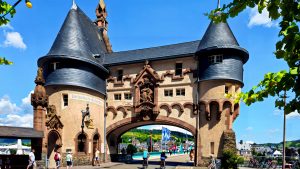
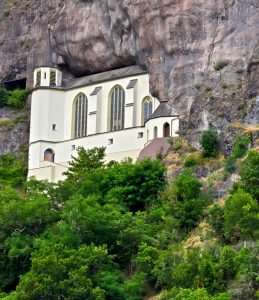
Leave a Reply